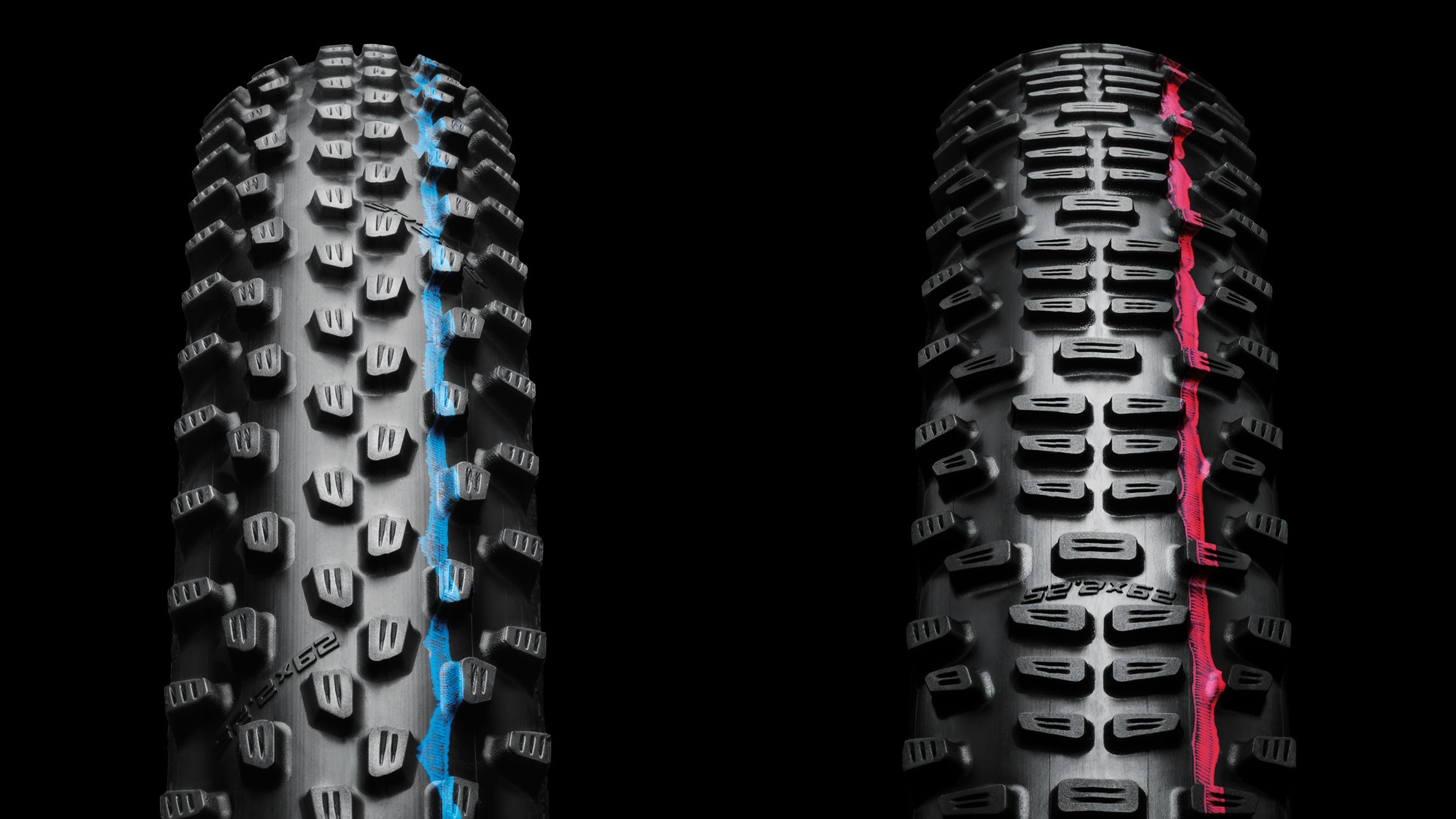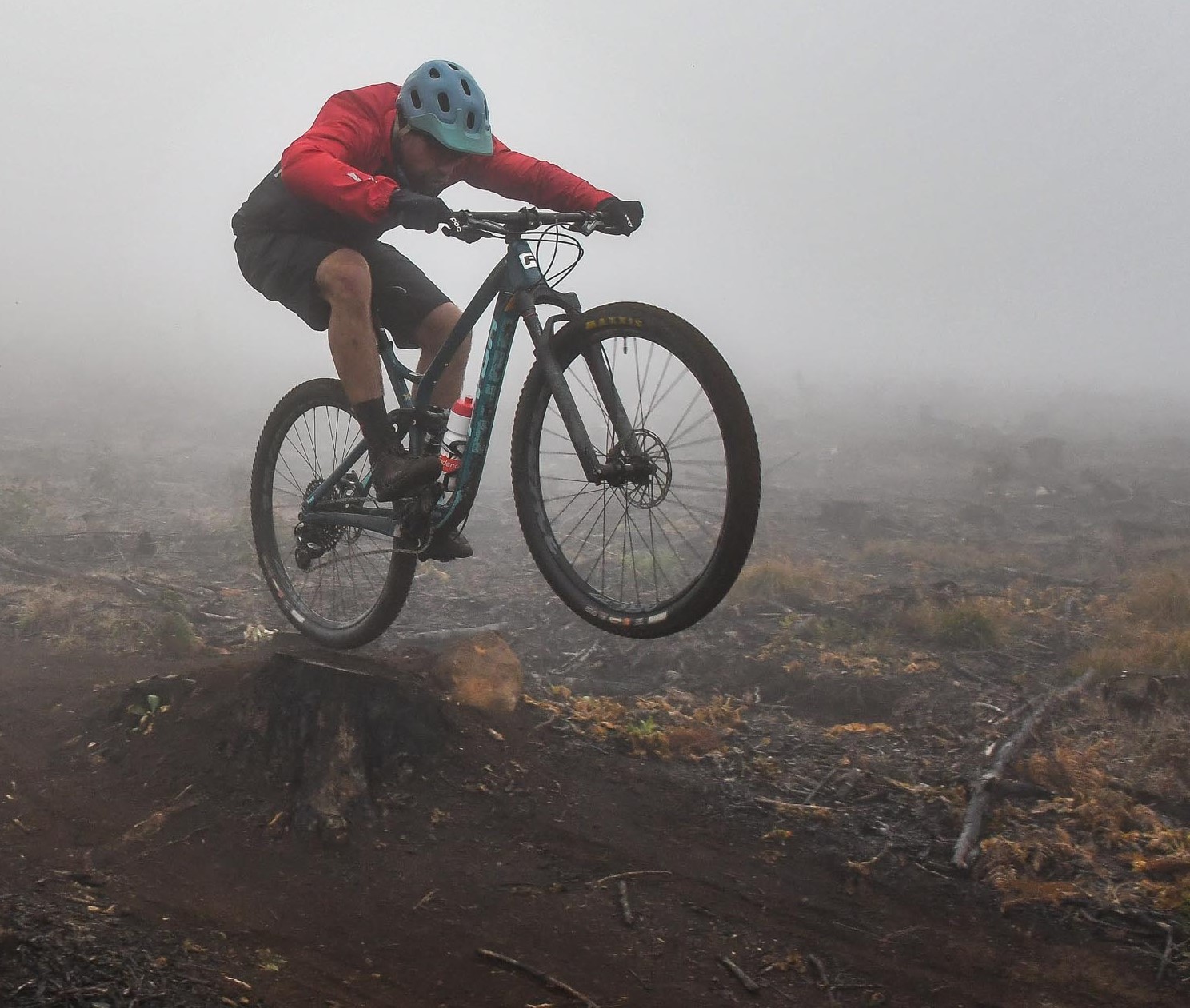How tyre tread influences your mountain biking
Mountain bikers have a huge choice of tyre treads. But what to those tread blocks actually do?

Tyre tread has a greater influence on your cornering and technical terrain riding than frame material or suspension design. A tyre’s tread pattern is what enables you to brake, turn, find traction and keep rolling along off-road. In mountain biking, there is a wide variety of designs available.
Reflecting the diversity of terrain mountain bikers ride (loam, mud, rock, dry soil, roots), tyre treads are optimised for specific applications. As with any technical feature on your mountain bike, tyre tread is a compromise: each design offering benefits and debits.
It is not only terrain tyre which impacts tread pattern design. A decade and a half ago mountain bikers were all rolling a similar wheel size (26”) with quite a narrow choice of widths. In the 2020 market there are both 27.5- and 29er tyres, available in a much greater diversity of size.
There are three anchor features of any tyre’s dynamic performance. First of these is rolling resistance and how the tyre traverses terrain. Secondly, we consider how it facilitates cornering/technical feature grip (allowing you to steer accurately), and thirdly: braking performance.
All tyres are a compromise. If you wish to ride extremely steep and technical terrain, in muddy winter conditions, you’ll be on a tyre with huge but very few tread blocks, allowing the tread to bite into terrain and self-clean easily whilst rolling. The debit is that in extreme conditions a mud tyre has awful rolling resistance and is nothing short of frightening on hard wet surfaces.
For the dedicated amateur mountain biker, a versatile tyre is desired. One with a compromise between tread blocks shaped for steering input and braking, without creating too much rolling resistance.
Tread blocks transfer forces
Steering a mountain bike’s front wheel over technical terrain, and making it go where you want, is about applying rider weight to the terrain.
Your tyre's tread pattern and block size are like dynamic mechanical features which lock into terrain as the wheel rolls along.
With larger tread blocks, which are sequentially spaced, you can exert more steering force onto the terrain, manipulating the tyre/terrain contact point and generating superior grip.
Tyre designers are mindful that steering forces are best applied at an angle - you can’t flick around a switchback in an upright position. That is why you’ll notice that edge knobs on your tyre, are often shaped with an angle, instead of being moulded into the rubber, at 90-degrees.
Tread blocks play an even more crucial role in braking. A smaller centre-tread won’t dig into terrain with the same force that larger tread blocks are capable of.
Like steering dynamics, most of the deceleration on your mountain bike is enabled by the front wheel, especially when you are descending. Braking is also best done in a straight line, and that means that your tyre’s centre blocks are the rubber shape which has the greatest influence when squeezing that brake lever.
Tyre width has a notable influence on tread design, not to mention the internal diameter of your wheelset. Over the last few years, there has been a trend to wider wheels, with the intention of structurally supporting larger volume tyres, which forces designers to rethink how a tyre shapes and corners when inflated.
Our advice? Run the lowest rolling resistance tyre, with modest tread blocks, at the back and one with some more shapely and larger edge blocks on the front, to secure your steering grip. Mixing tyre tread patterns is important as the front and rear wheels of your mountain bike do two very different things: steering/braking and power transfer.

Lance Branquinho is a Namibian-born journalist who graduated to mountain biking after injuries curtailed his trail running. He has a weakness for British steel hardtails, especially those which only run a single gear. As well as Bike Perfect, Lance has written for MBR.com, Off-Road.cc and Cycling News.
